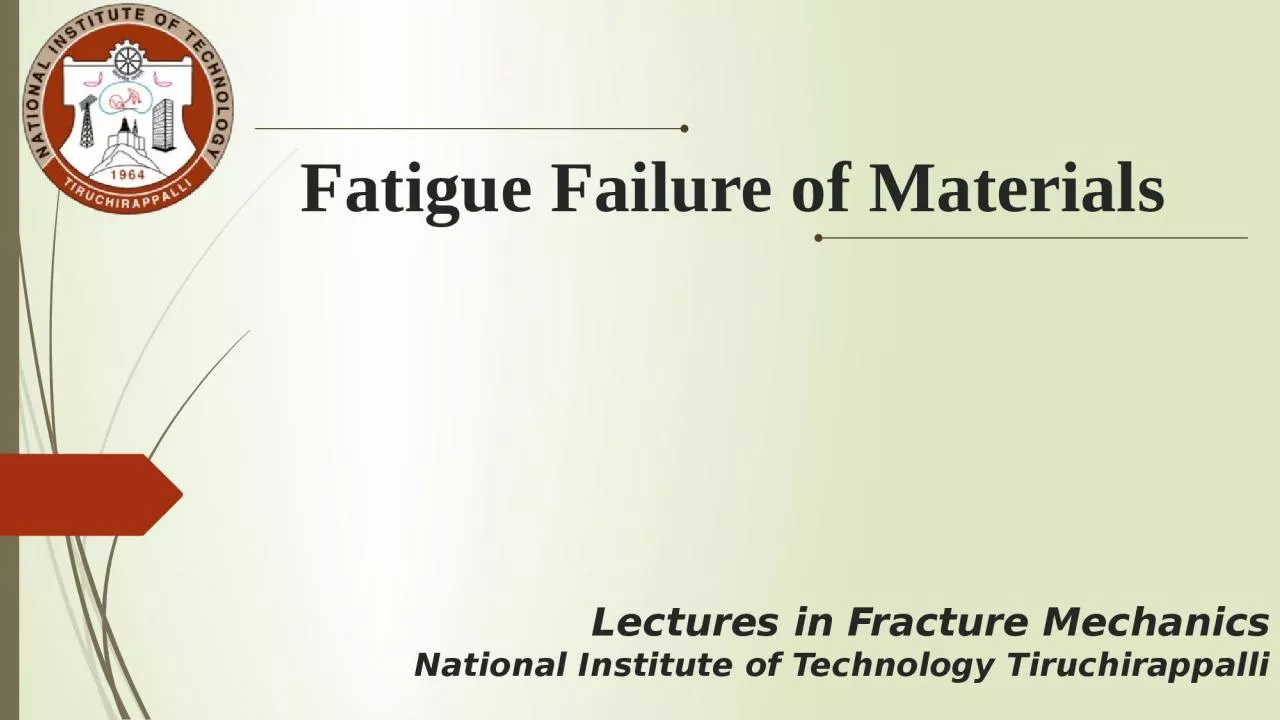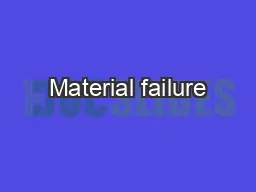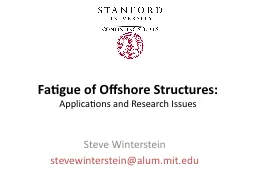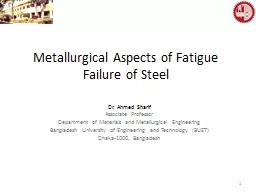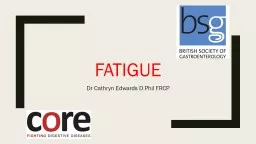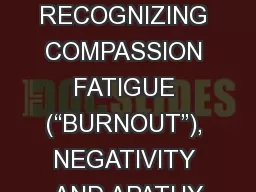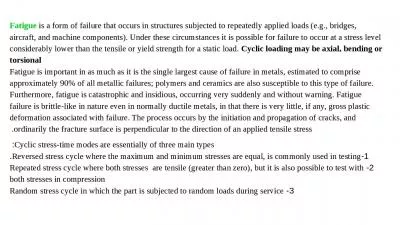PPT-Fatigue Failure of Material
Author : jacey | Published Date : 2023-10-04
s Lectures in Fracture Mechanics National Institute of Technology Tiruchirappalli Introduction to fatigue failure s Laboratory te s ting v s real life In real
Presentation Embed Code
Download Presentation
Download Presentation The PPT/PDF document "Fatigue Failure of Material" is the property of its rightful owner. Permission is granted to download and print the materials on this website for personal, non-commercial use only, and to display it on your personal computer provided you do not modify the materials and that you retain all copyright notices contained in the materials. By downloading content from our website, you accept the terms of this agreement.
Fatigue Failure of Material: Transcript
Download Rules Of Document
"Fatigue Failure of Material"The content belongs to its owner. You may download and print it for personal use, without modification, and keep all copyright notices. By downloading, you agree to these terms.
Related Documents

